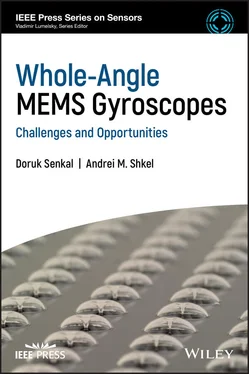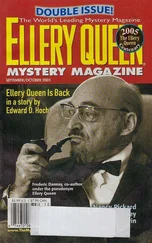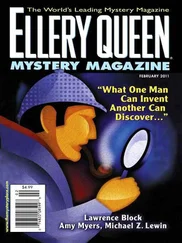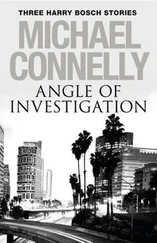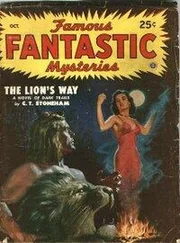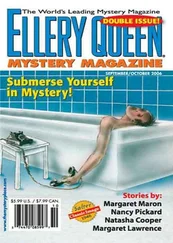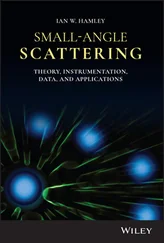Doruk Senkal - Whole-Angle MEMS Gyroscopes
Здесь есть возможность читать онлайн «Doruk Senkal - Whole-Angle MEMS Gyroscopes» — ознакомительный отрывок электронной книги совершенно бесплатно, а после прочтения отрывка купить полную версию. В некоторых случаях можно слушать аудио, скачать через торрент в формате fb2 и присутствует краткое содержание. Жанр: unrecognised, на английском языке. Описание произведения, (предисловие) а так же отзывы посетителей доступны на портале библиотеки ЛибКат.
- Название:Whole-Angle MEMS Gyroscopes
- Автор:
- Жанр:
- Год:неизвестен
- ISBN:нет данных
- Рейтинг книги:5 / 5. Голосов: 1
-
Избранное:Добавить в избранное
- Отзывы:
-
Ваша оценка:
- 100
- 1
- 2
- 3
- 4
- 5
Whole-Angle MEMS Gyroscopes: краткое содержание, описание и аннотация
Предлагаем к чтению аннотацию, описание, краткое содержание или предисловие (зависит от того, что написал сам автор книги «Whole-Angle MEMS Gyroscopes»). Если вы не нашли необходимую информацию о книге — напишите в комментариях, мы постараемся отыскать её.
Whole-Angle Gyroscopes: Challenges and Opportunities
Whole-Angle Gyroscopes
Whole-Angle MEMS Gyroscopes — читать онлайн ознакомительный отрывок
Ниже представлен текст книги, разбитый по страницам. Система сохранения места последней прочитанной страницы, позволяет с удобством читать онлайн бесплатно книгу «Whole-Angle MEMS Gyroscopes», без необходимости каждый раз заново искать на чём Вы остановились. Поставьте закладку, и сможете в любой момент перейти на страницу, на которой закончили чтение.
Интервал:
Закладка:
For general information on our other products and services or for technical support, please contact our Customer Care Department within the United States at (800) 762-2974, outside the United States at (317) 572-3993 or fax (317) 572-4002.
Wiley also publishes its books in a variety of electronic formats. Some content that appears in print may not be available in electronic formats. For more information aboutWiley products, visit our web site at www.wiley.com.
Library of Congress Cataloging-in-Publication Data is applied for
ISBN 9781119441885
Cover Design: Wiley
Cover Image: Courtesy of Doruk Senkal
List of Abbreviations
Table 1Control system abbreviations.
| Symbol | Description |
| Quadrature | Unwanted component of oscillation that interferes with estimation of the pattern angle, manifests as a result of structural imperfections |
| AGC | Amplitude Gain Control, closed‐loop control of drive amplitude |
| PLL | Phase Locked Loop, closed‐loop control system that generates an AC signal with a predetermined phase offset from the resonator |
| FTR | Force‐to‐rebalance, closed‐loop control system that actively drives the pattern angle to a setpoint |
| Quadrature null | Closed‐loop control system that actively suppresses the effects of structural imperfections within the gyroscope |
Table 2Mechanical parameters of the resonator.
| Symbol | Description |
| f | Mean frequency of the two primary modes of the resonator |
| τ | Mean energy decay time constant of the resonator |
| Q ‐factor | Ratio of stored energy to energy loss per vibration cycle ( Q = τπf ) |
| Δ f | Frequency split between primary modes in Hz (Δ f = f x− f y) |
| Δ ω | Frequency split between primary modes in rad/s (Δ ω = ω x− ω y) |
| Δ τ −1 | Measure of anisodamping within the gyroscope (  ) ) |
| θ ω | Angle defining the orientation of actual versus intended axes of elasticity |
| θ τ | Angle defining the orientation of actual versus intended axes of damping |
| ( x , y , z ) | Coordinate frame oriented along intended axes of symmetry x and y |
| n = 2 mode | A 4‐node degenerate mode pair of a wineglass or ring/disk system |
| n = 3 mode | A 6‐node degenerate mode pair of a wineglass or ring/disk system |
| Precession pattern | Vibration pattern formed by superposition of x and y vibratory modes, which is capable of changing its orientation (precesses) when subjected to Coriolis forces or an external forcing function |
| Pattern angle ( θ ) | Orientation of the precession pattern in degrees, which is a measure of angular rotation in a Rate Integrating Gyroscope |
Preface
Coriolis Vibratory Gyroscopes (CVGs) can be divided into two broad categories based on the gyroscope's mechanical element: degenerate mode gyroscopes (type 1), which have x – y symmetry, and nondegenerate mode gyroscopes (type 2), which are designed intentionally to be asymmetric in x and y modes.
Currently, nondegenerate mode gyroscopes fulfill the needs of a variety of commercial applications, such as tilt detection, activity tracking, and gaming. However, when it comes to inertial navigation, where sensitivity and stability of the sensors are very important, commercially available MEMS sensors fall short by three orders of magnitude. Degenerate mode gyroscopes, on the other hand, offer a number of unique advantages compared to nondegenerate vibratory rate gyroscopes, including higher rate sensitivity, ability to implement whole‐angle mechanization with mechanically unlimited dynamic range, exceptional scale factor stability, and a potential for self‐calibration. For this reason, as the MEMS gyroscope development is reaching maturity, the Research and Development focus is shifting from high‐volume production of low‐cost nondegenerate mode gyroscopes to high performance degenerate mode gyroscopes. This paradigm shift in MEMS gyroscope research and development creates a need for a reference book to serve both as a guide and an entry point to the field of degenerate mode gyroscopes.
Despite the growing interest in this field, the available information is scattered across a disparate group of conference proceedings and journal papers. For the aspiring scientist/engineer, the scarcity of information forms a large barrier to entry into the field of degenerate mode gyroscopes. This book aims to lower the barrier to entry by providing the reader with a solid understanding of the fundamentals of degenerate mode gyroscopes and its control strategies, as well as providing the necessary know‐how and technical jargon needed to interpret future publications in the field.
The book is intended to be a reference material for researchers, scientists, engineers, and college/graduate students who are interested in inertial sensors. The book may also be of interest to control systems engineers, electrical and electronics engineers, as well as semiconductor engineers who work with inertial sensors. Finally, materials scientists and MEMS production engineers may find the section regarding various fabrication technologies and fabrication defects/energy loss mechanisms interesting.
Doruk Senkal
Andrei M. Shkel
About the Authors

Doruk Senkal
Dr. Senkal has been working on the development of Inertial Navigation Technologies for Augmented and Virtual Reality applications at Facebook since 2018. Before joining Facebook, he was working as a MEMS designer at TDK Invensense, developing MEMS Inertial Sensors for mobile devices.
He received his PhD degree (2015) in Mechanical and Aerospace Engineering from the University of California, Irvine, with a focus on MEMS Coriolis Vibratory Gyroscopes, received his MSc degree (2009) in Mechanical Engineering from Washington State University with a focus on robotics, and received his BSc degree (2007) in Mechanical Engineering from Middle East Technical University.
His research interests, represented in over 20 international conference papers, 9 peer‐reviewed journal papers, and 16 patent applications, encompass all aspects of MEMS inertial sensor development, including sensor design, device fabrication, algorithms, and control.

Andrei M. Shkel
Prof. Shkel has been on faculty at the University of California, Irvine, since 2000. From 2009 to 2013, he was on leave from academia serving as a Program Manager in the Microsystems Technology Office of DARPA, where he initiated and managed over $200M investment portfolio in technology development. His research interests are reflected in over 250 publications, 40 patents, and 3 books. Dr. Shkel has been on a number of editorial boards, most recently as Editor of IEEE JMEMS and the founding chair of the IEEE Inertial Sensors (INERTIAL). He has been awarded in 2013 the Office of the Secretary of Defense Medal for Exceptional Public Service, 2020 Innovator of the Year Award, 2009 IEEE Sensors Council Technical Achievement Award, 2008 Researcher of the Year Award, and the 2005 NSF CAREER award. He received his Diploma with excellence (1991) in Mechanics and Mathematics from Moscow State University, PhD degree (1997) in Mechanical Engineering from the University of Wisconsin at Madison, and completed his postdoc (1999) at UC Berkeley. Dr. Shkel is the 2020–2022 President of the IEEE Sensors Council and the IEEE Fellow.
Читать дальшеИнтервал:
Закладка:
Похожие книги на «Whole-Angle MEMS Gyroscopes»
Представляем Вашему вниманию похожие книги на «Whole-Angle MEMS Gyroscopes» списком для выбора. Мы отобрали схожую по названию и смыслу литературу в надежде предоставить читателям больше вариантов отыскать новые, интересные, ещё непрочитанные произведения.
Обсуждение, отзывы о книге «Whole-Angle MEMS Gyroscopes» и просто собственные мнения читателей. Оставьте ваши комментарии, напишите, что Вы думаете о произведении, его смысле или главных героях. Укажите что конкретно понравилось, а что нет, и почему Вы так считаете.
